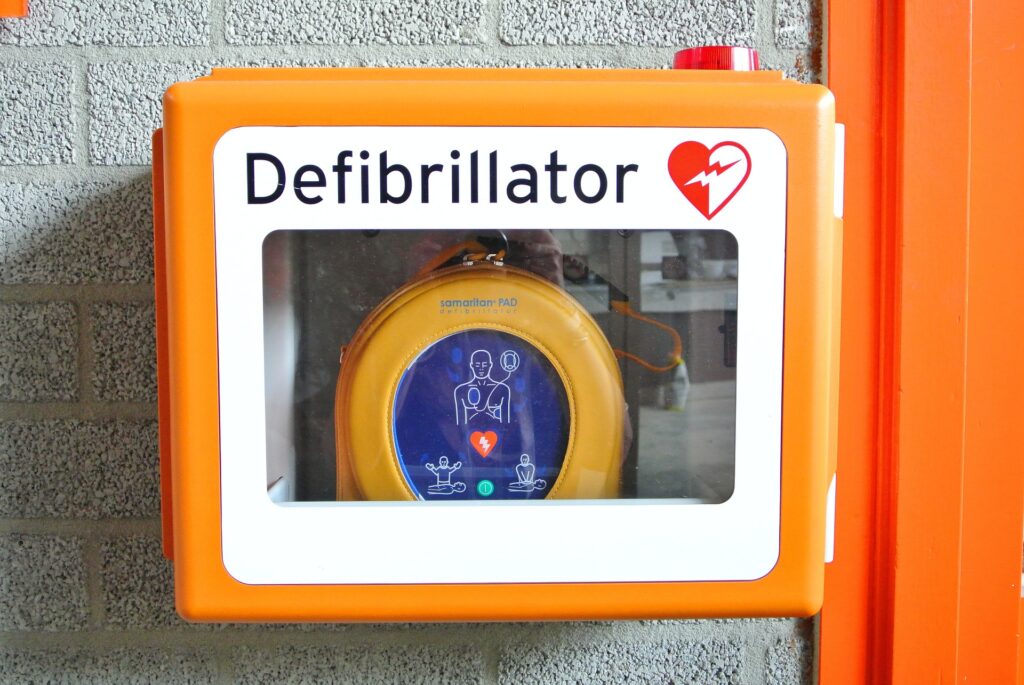Grants for defibrillators are meant to protect emergency respondents.
The federal government offers these grants to encourage the placement of defibrillators to decrease the death rate caused by sudden cardiac arrest.
Grants for Defibrillators
Sudden cardiac arrest affects approximately 1,000 people per day in the United States. This emerged the need for Defibrillators.
Grants for defibrillators are provided to support survival and avoid brain damage.
Defibrillators are devices that help in restoring a normal heartbeat. It works by sending the heart a shock or sending an electric pulse.
Defibrillators are also used to correct or prevent arrhythmias (uneven heartbeats that are too slow or fast).

Types of Defibrillators
The working of different types of defibrillators varies. There are three types of defibrillators:
- Automated external defibrillators (AEDs) are primarily found in many public spaces. An AED is a battery-operated, lightweight, portable device that checks the heart’s rhythm and sends a shock to the heart to restore a regular beat.
They are developed to save the lives of people who experience sudden cardiac arrest.
Grants for AED were given to fulfill the need to place defibrillators in areas like restaurants, schools, public places, offices, etc.
Even an untrained bystander can use this device in case of an emergency.
Electrodes, sticky pads with sensors, are attached to the chest of the patient with cardiac arrest.
These electrodes send information about the patient’s heartbeat to a computer in the AED. Finally, the computer analyses if the electric shock is required. If needed, the shock is delivered through electrodes.
- Implantable Cardioverter Defibrillators (ICDs) are surgically placed inside the body, typically in the chest or abdomen.
It prevents sudden death among people at high risk of life-threatening arrhythmias that can interrupt blood flow from the heart.
The ICD sends a low-energy shock to correct the arrhythmia.
If low-energy shocks do not restore a normal heartbeat, the device will escalate to high-energy shocks.
ICDs detect your heart pulses with a generator connected to wires and delivers a shock when needed.
The ICD records the heart’s electrical activity and rhythms, which can help doctors fine-tune the device’s programming.
- Wearable Cardioverter Defibrillators (WCDs) rest on the body. Getting used to living with a defibrillator can take effort and time.
WCDs have sensors that attach to your skin. Wires connect them to a unit that determines your heartbeat and delivers a shock when required.
The device has a belt attached to the vest, worn under the clothes. The doctor fits the machine according to your size to detect the heart rhythm.
The sensors detect the occurrence of arrhythmia and notify with an alert. These alerts can also be turned off to prevent shocks.
The device can also deliver repeated shocks if not responded to. The sensors must be replaced after each episode.
It is essential to be aware of possible complications and risks.
Basics for Defibrillator Grant Program
Highlight the primary considerations when applying for the Defibrillator Grant Program.
- Recruit personnel at your location willing to work with local medical and emergency services.
- Ensure that all those who will be affected by the planning of the defibrillation program are involved.
- The decision-making process needs to be in written form and clearly stated.
- Confusion when delivering emergency medical services should be avoided.
- Having a physician as part of the implementation and planning process is essential.
- Ensure all federal, state, and local laws and regulations are followed.
- Devising a training program is crucial to getting your defibrillation grant program.
Role of the FDA
The FDA recognizes the importance of Defibrillators as life-saving devices.
The FDA does not give grants for defibrillators but regulates their safety and effectiveness, ensuring that devices and their accessories are reliable before they are marketed.
Problems associated with many defibrillators, like manufacturing issues, may contribute to patient harm or prevent patient rescue.
The FDA evaluates the safety and effectiveness of the devices before they are marketed to the public.
FDA-approved medical devices include those that are implanted, such as ICDs, and external devices, such as AEDs and WCDs.

Conclusion
Grants for defibrillators are used to treat a person suffering from SCA (Sudden Cardiac Arrest). Suppose you find a problem with a device or experience a side effect related to using a machine.
In that case, you can report the issue through the FDA’s MedWatch Safety Information and Adverse Event Reporting Program.
The Department of Health and Human Services, in collaboration with the General Services Administration, has developed ‘Guidelines for Public Access Defibrillation Programs in Federal Facilities’ to facilitate the implementation of defibrillator programs.
See Also
Grants for AED (Automated External Defibrillator)